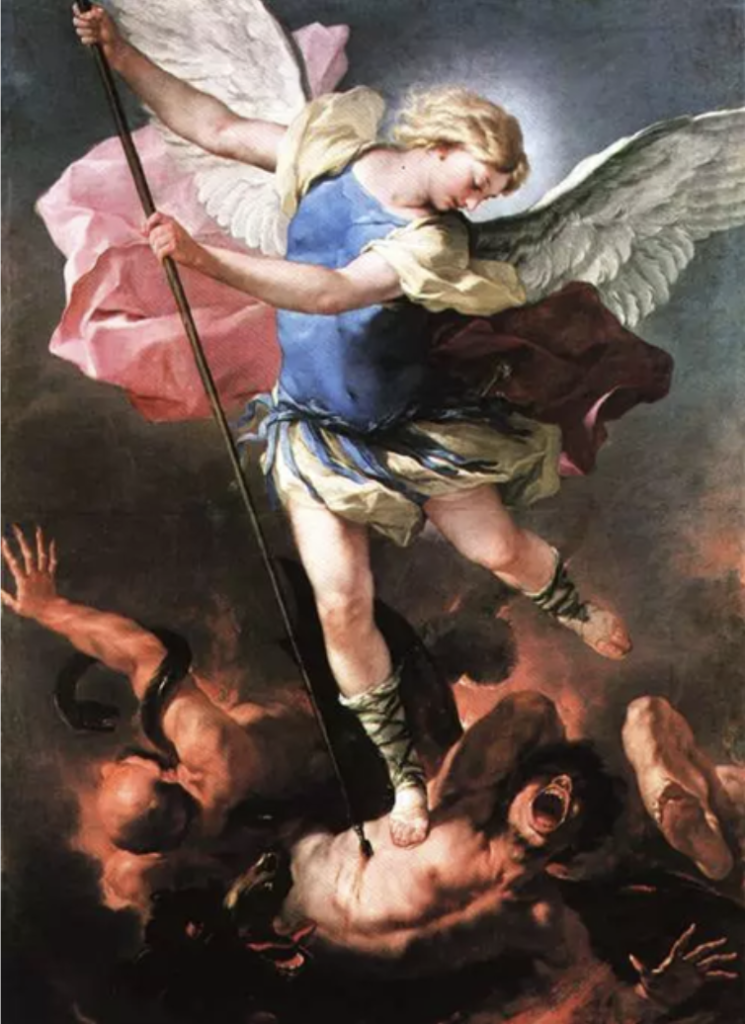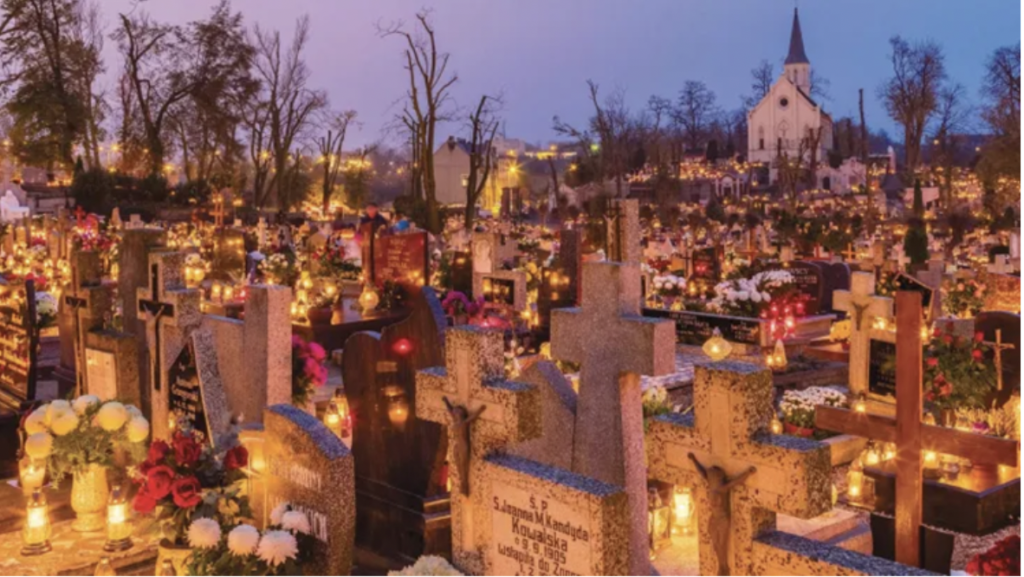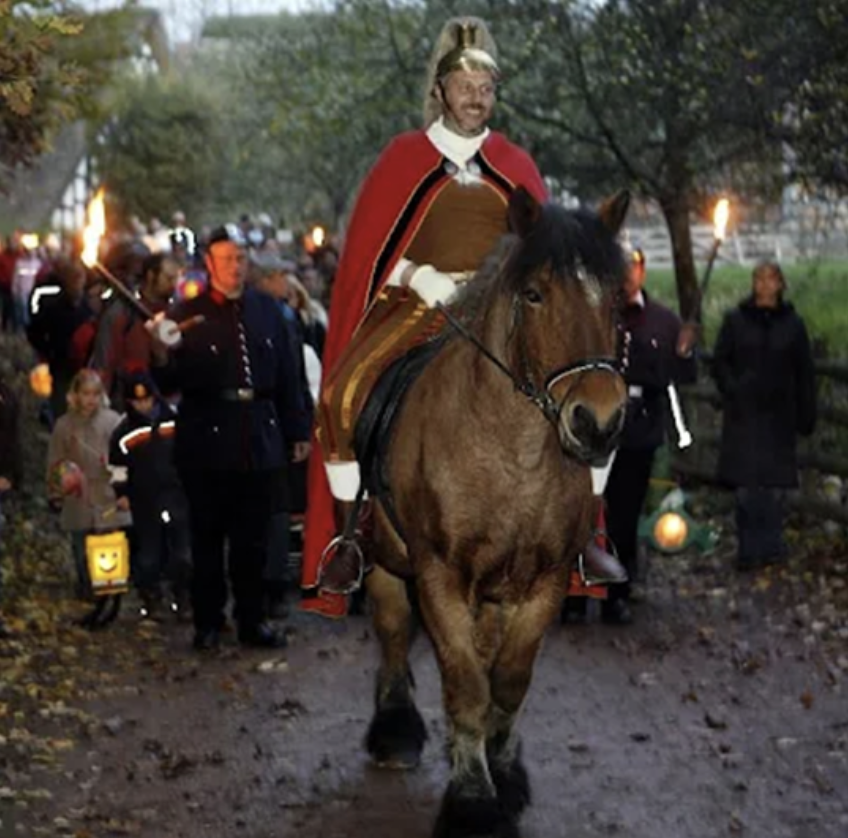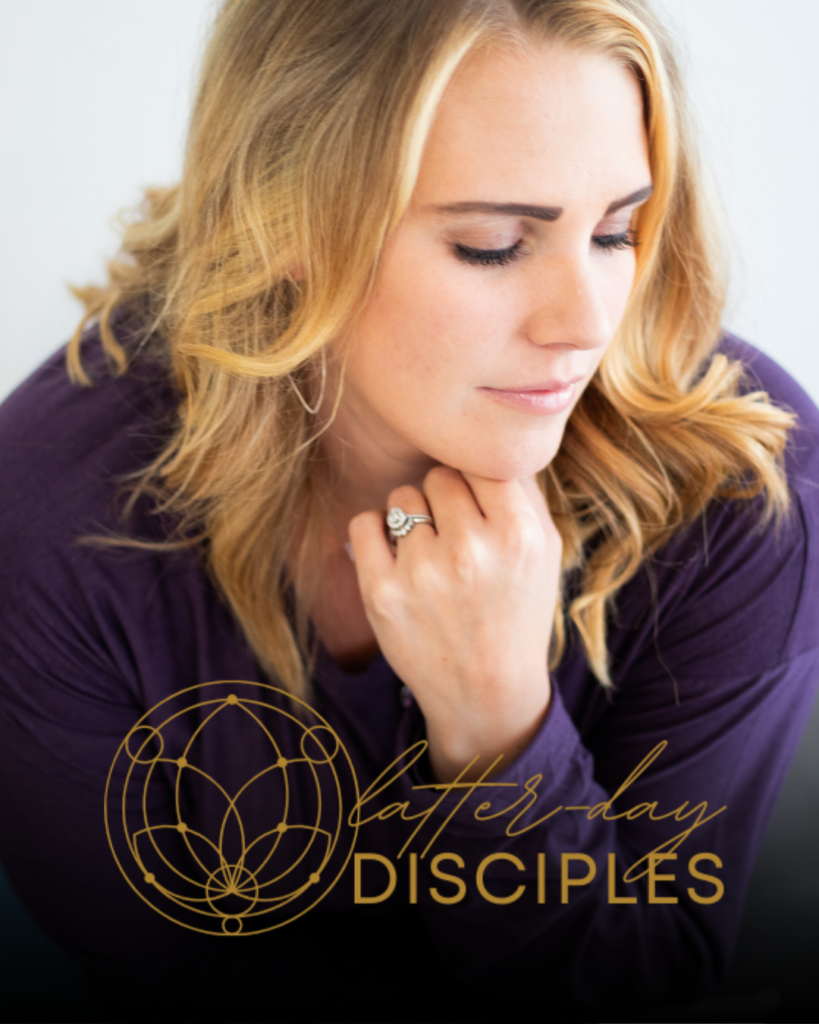

Autumn Holidays
Written by Alisa Davis
My stake recently made significant boundary changes for all the wards and called all new leadership. At the special service at the stake center all the old leaders who had been released sat in their seats at the front wearing lei’s hand made by one of the mothers of a newly called Bishop. I have frequently seen Polynesian traditions incorporated into church events in other areas as well and it is something I have not seen often in any church outside of Hawaii itself. I have also noticed that among Latter-Day Saints there has been a growing interest in the Dia De Los Muertos traditions during the Halloween season because of their beauty and the greater meaning it brings to the holiday with its emphasis on remembering and honoring our ancestors. The church’s openness to embracing the meaningful traditions of its members’ cultures is one of its under-appreciated strengths in my opinion. It fosters a sense of community that unifies while simultaneously honoring the diversity that is the garden of the Lord’s Church.
Within western Christianity there are many very old traditions that have been forgotten with the rise of Evangelicalism or commercialized beyond recognition. In a time when there was no TV, radio, and when most people couldn’t even read, these traditions gave opportunities for communities to come together to celebrate and put special emphasis on important doctrines. This created unity in the community and passed on their beliefs and values to the next generation in an experiential way that created strong memories and associations. In her book, To Dance With God, Gertrud Mueller Nelson writes;
“The poetic aspect of the Church has been centered in the cycles of our human development and has nourished us through rite and symbol, through rhythmic repetition. This Church celebrates our cycles and seasons, inviting us to see and engage and feel and touch and be aware and grow and be transformed. Through myth and symbol the experiences which make up our daily lives are affirmed and made sacred. This creative and poetic Church helps us to pay full attention to what we might otherwise deem ordinary and commonplace. Rites and symbols use the ordinary and earthy elements of our existence and, by encircling them, ratify, sanctify, complete. The ordinary becomes the container for the divine.”
Remembering, and reviving, these traditions give those of us in the restored church today the opportunity to experience with our senses our own important doctrines and observe them in a way that unifies us with the experiences of our ancestors who may have lived in England, Germany, Spain, Holland, or other western countries. For myself, I can attest that rediscovering the traditions of my ancestors has brought a greater richness to my faith and creates a greater awareness of how sacred each day, week, and season is. Through these centuries and even millennia old traditions there is a vehicle to celebrate the gospel with each season in a way that excites even greater joy and anticipation for Christmas and Easter.
Within the cycle of the year the autumn season has always been an important season across cultures for celebrating the harvest and acknowledging the cycle of life that inevitably must end in death. For our Jewish brothers the fall feasts center around the most holy days of the year when they look towards the final judgment and atonement of all things, remembering God’s work in creation, his Kingship over our lives, and remembering what he has already done by redeeming Israel from Egypt and giving them the scriptures [1]. For the Christian church this time of year was very influenced by what people were experiencing in their daily lives as they brought in the harvest and looked toward the colder months that had the potential to bring so much hardship with them. Remembering God’s faithfulness to provide our daily bread and looking with anticipation to the coming of the Christ child in the heart of the darkness of winter shaped what the church emphasized in this season.
As a convert to the Restored Church I have found it to be easy to make connections between the spiritual practices I have come to love and the teachings of the Church. For me the old traditions create a sense of groundedness with their daily, weekly, and seasonal practices that remind me to center myself and reflect frequently on Christ. The revelations given to the Restored Church brings greater meaning to these practices with the breadth and depth of knowledge that is available to us.

Michaelmas, also known as the feast of Saint Michael and all the Angels, is observed on the 29th of September. It honors the Archangel Michael who led the angelic hosts in casting the devil out of heaven. A feast dedicated to Michael can be traced to the 5th century and marked the end of the harvest season. Most of the best known traditions practiced today come from Great Britain, one being the baking of blackberry pies because when the devil was cast out of heaven, to add insult to injury, he landed in a blackberry bramble [2,3]. The first feast of the Jewish autumn holy days also takes place in September or early October. Rosh Hashanah, or the Head of the Year, is the Jewish New Year and is the “birthday” of creation and our first mortal parents, Adam and Eve. Knowing that Adam became the first man because of his defense of the gospel in heaven as Michael, the feast of Michaelmas is a natural time to remember and celebrate the knowledge of the premortal life that we have as members of the restored church. Retelling the story of the Heavenly Council, the war in Heaven, the creation and embodiment of Adam and Eve, and our eventual return to Adam-ondi-Ahman. In the restored gospel, the Jewish feast of Rosh Hashanah and the Christian feast of Saint Michael find unity and gain even greater meaning than they had without each other. Michaelmas is the feast that reminds us why we are here, and though we may face opposition in this world for a time due to the sins of angels, we are the ones who rallied behind Michael and have the support of angels in facing the devil in this life. And that ultimately our Heavenly Father will reward the faithful as he did Adam who was elevated at his death to the rank of Prince and Archangel.

Allhallowtide. There has been a growing interest in the Dia de los Muertos among members of the church, but what many don’t realize is that the aspects of this holiday that resonate most strongly with Latter-Day Saints are the elements of Christianity that were merged with pre-Columbian rituals honoring the dead [4]. In English it is called Allhallowtide and the night before the two day holiday is All Hallows Eve – or Halloween as it’s more commonly known. Halloween in the US has become nearly completely secularized and largely associated with the horror genre and the ancient Celtic traditions of Britain; only Christians who attend a liturgical church still know that the real holiday comes in the two days that follow.
In the year 609 Pope Boniface IV consecrated the Roman Pantheon as a church in honor of Mary and all Christian Martyrs, establishing May 13 as All Saints Day – a day to remember all those who had been martyred for their faith. The feast of All Saints became so popular that the annual flood of pilgrims to Rome would wipe out the remaining food supplies left from the previous winter and the pilgrims would suffer in the sweltering Rome heat that comes in May. Pope Gregory IV moved the feast to November 1, at the end of the harvest when food was plentiful and the weather cooler. This coincided with pagan harvest festivals that were common across Europe that celebrated the return of the spirits of departed loved ones [5,6,7]. A few centuries later November 2 was added as All Souls Day, to honor all the faithful departed and not just the martyrs. All Souls Day was a day for praying for the souls still in purgatory. With the Protestant Reformation the two day holiday became simplified to a time dedicated to remembering all the faithful departed that made up the “great cloud of witnesses”[8].
The central Jewish holiday of the autumn season is the fast of Yom Kippur, the Day of Atonement, “the holiest day of the year, when we are closest to G‑d and to the essence of our souls”. In the atonement of Jesus Christ we are called to die to ourselves and our old nature and consecrate ourselves as a people devoted to God, just as the Jews did at Mount Sinai at the first Yom Kippur. As followers of Christ we also know that death is not the end but a transition to a different spiritual state and that our lives are meant to be spent in preparation for that moment. “Jesus spent his whole life preparing for his death. . . If a spiritual discipline is doing the things Jesus did, then memento mori, remembering and preparing for your death, is a spiritual practice.” Returning our Halloween practices to remembering the dead, both the faithful departed and those who yet wait for their proxy work to be completed, and remembering that our own death is coming, could not be more strongly aligned with the values and beliefs of the Restored Church.

Martinmas, or the feast of Saint Martin, commemorates a fourth century Roman soldier who became the third Bishop of Tours, France. St Martin is best known for using his sword to cut his cloak in two in the depths of winter, giving half to a beggar who later revealed himself to Martin as Jesus Christ. Martinmas is the original Thanksgiving holiday that is celebrated on November 11 starting in the middle ages and is still observed in many European countries to this day with feasting and children’s lantern walks led by St Martin. Martinmas also originally marked the beginning of a 40 day fast that would eventually develop into the Advent tradition of preparing for Christmas [9,10]. The final Jewish holiday of the autumn season is Sukkot and Simchat Torah, which usually falls sometime in October. It is also a thanksgiving festival that thanks God for the harvest and commemorates the years spent wandering in the wilderness and the giving of the Torah at Sinai [11]. Both the Jewish and the Christian holidays carry the themes of wandering and being led by the light of God, either in the form of children’s lanterns or as a pillar of fire in the deserts of Sinai. In these ancient thanksgiving feasts we find joy in remembering that God is our provider. In America we have a national day of Thanksgiving at the end of November, but the themes of light, being led along dark paths or on dangerous journeys, and joy at receiving the gospel can all be found in Lehi’s vision of the Tree of Life. Adding the retelling of this rich and beautiful parable brings even more depth to these holidays and provides an opportunity to create a communal experience around the lessons of Lehi’s vision.
- https://www.chabad.org/holidays/JewishNewYear/template_cdo/aid/36130/jewish/High-Holidays-2024.htm
- https://www.christianity.com/wiki/holidays/what-is-michaelmas-history-meaning.html
- https://www.historic-uk.com/CultureUK/Michaelmas/
- https://www.history.com/topics/halloween/day-of-the-dead
- https://www.worldhistory.org/article/1456/history-of-halloween/
- https://faith.nd.edu/saint/all-hallows-eve/
- https://www.learnreligions.com/what-is-all-souls-day-542460
- Sacred Seasons, Danielle Hitchen, Harvest House Publishing
- https://en.wikipedia.org/wiki/Martin_of_Tours
- https://www.catholicculture.org/culture/liturgicalyear/activities/view.cfm?id=1191
- https://www.chabad.org/library/article_cdo/aid/984606/jewish/Sukkot-Simchat-Torah-2024.htm

Prepare with Us
The Honey and Lilies Blog is dedicated to helping your prepare spiritually, mentally and emotionally, physically, and temporally.

Tune In
Join Meghan each week for inspiring messages, and diving into the scriptures to help you live the gospel, seek truth, and become a true disciple of Christ.

Dive Deeper
We are excited to offer online, self-paced courses to help you deepen your faith and understanding of the gospel and your covenants.
